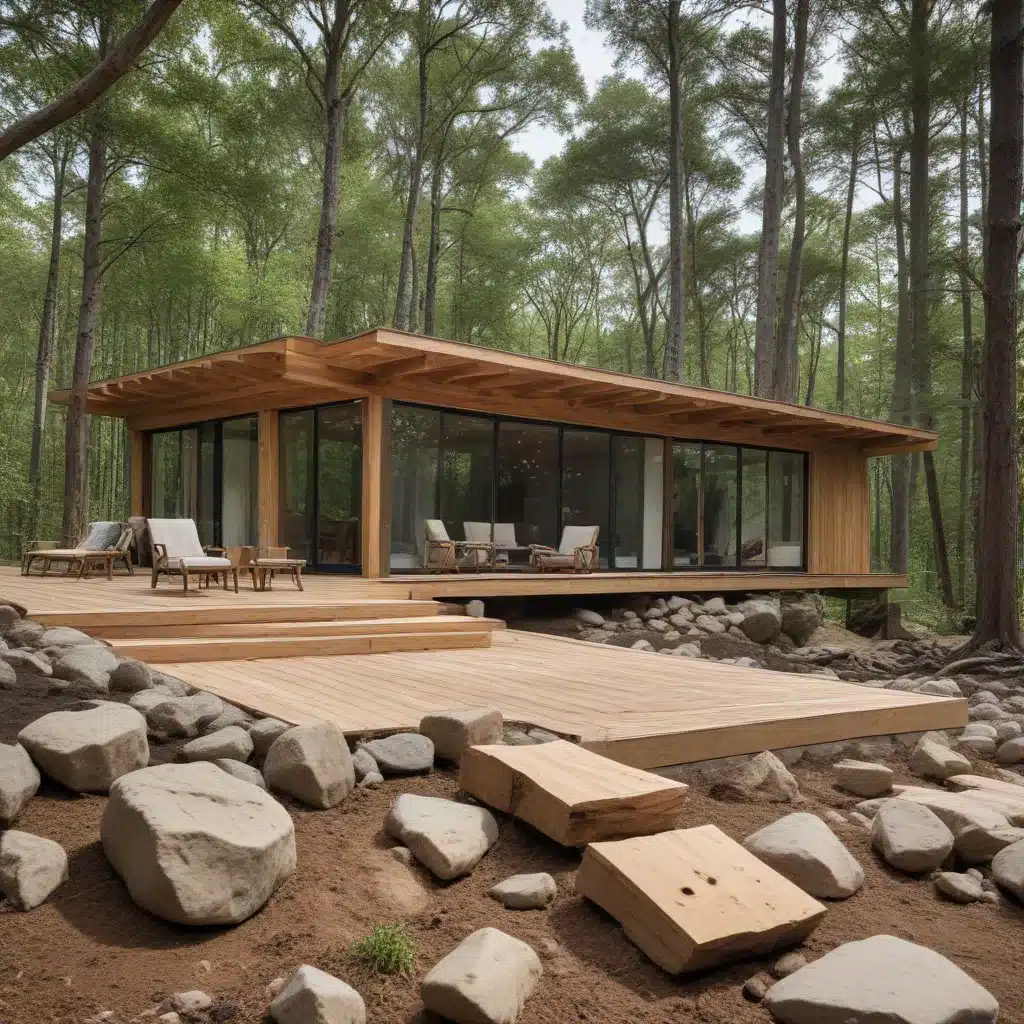
As a tree care specialist at TriCounty Tree Care, I’ve observed how the thoughtful design of outdoor retreats can foster environmental resilience in the face of natural disasters. By incorporating sustainable principles and strategic disaster planning, these sanctuaries can provide refuge, relaxation, and reconnection with nature, even amidst the most challenging conditions.
Environmental Resilience
Withstanding Natural Disasters
The impacts of climate change have heightened the frequency and intensity of extreme weather events, making disaster mitigation a critical consideration for any outdoor retreat. Careful site selection and architectural approaches can bolster a retreat’s ability to endure storms, floods, wildfires, and other calamities. Reviewing historical climate data and analyzing terrain can help identify optimal locations less prone to devastation.
Disaster Mitigation Strategies
Incorporating fire-resistant materials and passive design principles like strategic window placement and insulation can harden structures against the ravages of wildfires or hurricanes. Elevating buildings, installing permeable pavement, and devising flood prevention measures safeguard against rising waters. Backup power systems and evacuation planning ensure the retreat remains a reliable refuge when grid failures or access routes are compromised.
Sustainable Design
Eco-friendly Materials
Outdoor retreats that champion environmental stewardship often feature renewable, locally-sourced building materials that minimize their carbon footprint. Sustainably-harvested timber, rammed earth, bamboo, and recycled plastics are a few examples of resilient, low-impact options. These materials not only reduce environmental strain but can also withstand the rigors of remote settings.
Energy-efficient Features
Maximizing a retreat’s energy efficiency is paramount, both for operational cost-savings and to lower its ecological impact. Passive solar design, geothermal heating and cooling, and renewable energy generation like solar panels or micro-hydro turbines enable self-sufficiency. Water conservation strategies, from rainwater harvesting to greywater recycling, further enhance the sustainability of these nature-immersed sanctuaries.
Retreat Typology
Remote Cabins
Nestled in rugged wilderness, remote cabin retreats offer a secluded escape from the demands of daily life. Strategically sited to take advantage of natural topography, these off-grid dwellings leverage local materials and renewable energy to thrive in isolated settings. Their robust, modular construction equips them to weather the elements while providing comfortable accommodations.
Glamping Destinations
Bridging the divide between camping and luxury, glamping sites blend the tranquility of nature with elevated amenities. These retreats may feature yurts, treehouses, or safari-style tents outfitted with plush furnishings, gourmet kitchens, and spa-like bathrooms. Though more refined than primitive camping, glamping destinations still prioritize eco-consciousness and disaster preparedness.
Community Hubs
Some outdoor retreats function as community hubs, serving as gathering spaces, educational centers, or wellness sanctuaries. These retreats often incorporate biophilic design principles to foster a profound connection with the natural world. By cultivating a sense of belonging and stewardship, they empower visitors to become active participants in the retreat’s resilience and regeneration.
Crafting the Retreat
Site Selection
Thoughtful site selection is foundational to crafting a resilient outdoor retreat. Analyzing a location’s terrain, hydrology, and climate patterns can reveal its vulnerabilities and strengths. Prioritizing sites with natural protective features, such as elevated ground or fire-resistant vegetation, enhances the retreat’s ability to withstand disasters.
Architectural Approach
An architectural approach grounded in passive design principles optimizes a retreat’s environmental performance. Strategies like orienting structures to harness solar gain, incorporating thermal mass, and leveraging natural ventilation reduce energy demands. Modular construction techniques enable efficient, adaptable builds that can be tailored to the site’s unique characteristics.
Natural Disaster Preparedness
Extreme Weather Planning
Proactive planning for extreme weather events is essential for any outdoor retreat. Flood prevention measures, such as elevated foundations, permeable surfaces, and strategic drainage, safeguard against rising waters. Fire-resistant building materials and defensible space around structures bolster a retreat’s resilience against wildfires. Backup power systems and clear evacuation protocols ensure the safety of occupants when grid failures or access routes are compromised.
Emergency Response
In the event of a natural disaster, a retreat’s emergency response capabilities can make the difference between weathering the storm or succumbing to its wrath. Reliable backup power systems, stocked emergency supplies, and well-rehearsed evacuation plans empower retreats to continue serving as sanctuaries, even amidst the chaos. By anticipating and preparing for the unexpected, these outdoor retreats can remain beacons of safety and resilience.
Well-being and Relaxation
Biophilic Design
The principles of biophilic design are inherent to the ethos of outdoor retreats, fostering a profound connection between humans and the natural world. Integrating elements like natural light, water features, and lush vegetation can evoke sensory experiences that soothe the mind, body, and spirit. By immersing visitors in these restorative environments, retreats cultivate a sense of wellness, grounding, and rejuvenation.
Amenities and Programming
Beyond the architectural and environmental considerations, outdoor retreats often feature specialized amenities and programming to enhance the holistic well-being of their guests. Wellness facilities, such as yoga studios, meditation gardens, and hydrotherapy, provide opportunities for relaxation and personal growth. Educational workshops on topics like sustainable living, wilderness skills, or ecological stewardship empower visitors to become active participants in the retreat’s mission.
Whether nestled in remote wilderness or integrated within a community, resilient outdoor retreats crafted by TriCounty Tree Care exemplify the harmonious coexistence of human and natural systems. By prioritizing environmental sustainability, disaster preparedness, and biophilic design, these sanctuaries offer a refuge where individuals can disconnect, recharge, and reconnect with the natural world – even in the face of the most daunting challenges.


